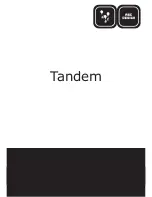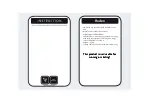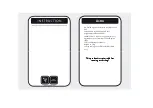
CHAPTER 25 Routing SBC
Mediant 4000 SBC | User's Manual
■
Action:
Defines the action that is done if the incoming call matches the characteristics of the
rule (i.e., routes the call to the specified destination).
The device searches the table from
top to bottom
for the
first
rule that matches the
characteristics of the incoming call. If it finds a matching rule, it sends the call to the destination
configured for that rule. If it doesn't find a matching rule, it rejects the call.
Configure stricter rules higher up in the table than less strict rules to ensure the desired
rule is used to route the call.
Strict
refers to the number of matching characteristics
configured for the rule. For example, a rule configured with source host name and
source IP Group as matching characteristics is stricter than a rule configured with only
source host name. If the rule configured with only source host name appears higher up
in the table, the device ("erroneously") uses the rule to route calls matching this source
host name (even if they also match the rule appearing lower down in the table
configured with the source IP Group as well).
The IP-to-IP Routing table lets you route incoming SIP dialog messages (e.g., INVITE) to any of
the following IP destinations:
■
According to registered user Contact listed in the device's registration database (only for User-
type IP Groups).
■
IP Group - the destination is the address configured for the Proxy Set associated with the IP
Group.
■
IP Group Set - the destination can be based on multiple IP Groups for load balancing, where
each call may be sent to a different IP Group within the IP Group Set depending on the IP
Group Set's definition.
■
Routing tag - the device sends the call to an IP Group (or IP Group Set) based on a destination
Dial Plan tag that corresponds to the destination (called) prefix number.
■
IP address in dotted-decimal notation or FQDN. Routing to a host name can be resolved using
NAPTR/SRV/A-Record.
■
Request-URI of incoming SIP dialog-initiating requests.
■
Any registered user in the registration database. If the Request-URI of the incoming INVITE
exists in the database, the call is sent to the corresponding contact address specified in the
database.
■
According to result of an ENUM query.
■
Hunt Group - used for call survivability of call centers (see
Configuring Call Survivability for
).
■
According to result of LDAP query (for more information on LDAP-based routing, see
Based on LDAP Active Directory Queries
).
■
Third-party routing server, which determines the destination (next hop) of the call (IP Group).
The IP Group represents the next device in the routing path to the final destination. For more
information, see
Centralized Third-Party Routing Server
■
Back to the sender of the incoming message, where the reply can be a SIP response code or a
3xx redirection response (with an optional Contact field to where the sender must re-send the
message).
The following figure summarizes the destination types:
- 546 -
Содержание Mediant 4000 SBC
Страница 1: ...User s Manual AudioCodes Series of Session Border Controllers SBC Mediant 4000 SBC Version 7 2...
Страница 40: ...Part I Getting Started with Initial Connectivity...
Страница 48: ...Part II Management Tools...
Страница 113: ...Part III General System Settings...
Страница 118: ...Part IV General VoIP Configuration...
Страница 525: ...Part V Session Border Controller Application...
Страница 654: ...Part VI Cloud Resilience Package...
Страница 663: ...Part VII High Availability System...
Страница 685: ...Part VIII Maintenance...
Страница 759: ...Part IX Status Performance Monitoring and Reporting...
Страница 844: ...Part X Diagnostics...
Страница 888: ...Part XI Appendix...
Страница 1036: ...This page is intentionally left blank CHAPTER 62 Technical Specifications Mediant 4000 SBC User s Manual 1003...
















































